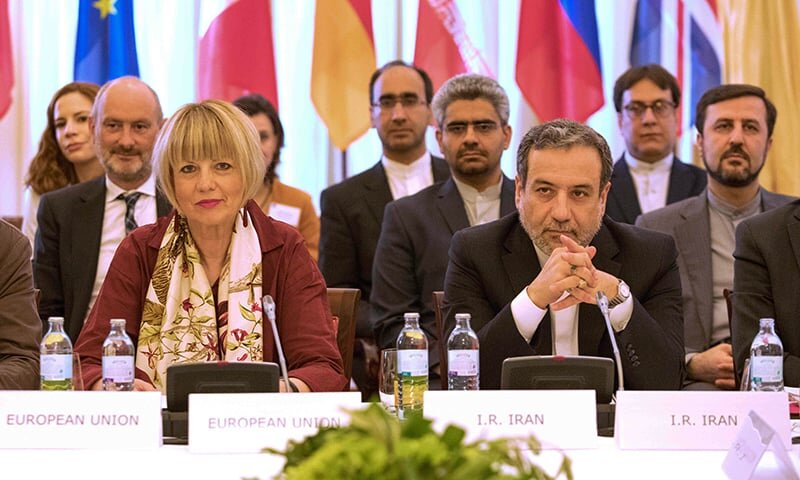EU may be a sweet-talker, but it’s full of empty promises

It was more than a year ago when U.S. President Donald Trump formally pulled the United States out of the nuclear deal that was struck between Iran and world powers in July 2015.
Trump decision received waves of criticism from other signatories of the deal, namely China, France, Germany, Russia, the United Kingdom and the European Union.
In January 2019, France, Germany and Britain (known as the E3) introduced an Instrument in Support of Trade Exchanges (INSTEX) which was meant to facilitate legitimate trade between European economic operators and Iran in order to convince Iran to stay in the 2015 nuclear deal.
Shortly after Europe’s announcement, welcoming the idea, on March 20, Central Bank of Iran (CBI)’s Governor Abdolnaser Hemmati announced that a mechanism similar to INSTEX has been registered in Iran, officially called the Special Trade and Finance Institute (STFI).
STFI was established to ease INSTEX implementation and at the time, Iranian government announced that Iran has no problem with getting the Europe’s financial instrument operational any time that Europeans decided make INSTEX operational.
Since then, several rounds of talks were held and hundreds of hours of discussion were done on the subject. The Europe claimed many times that “the mechanism will be operational soon”, however so far the EU claims have been no more than a bunch of empty promises.
The Europeans’ repeated false promises finally worn Iran’s patience thin, so that on Sunday, Iran officially announced it will take the second step in reducing its commitments to the JCPOA, as the deadline Tehran set for the Europeans to protect Tehran against the U.S. sanctions ended on July 7.
The long road to INSTEX
In the last day of January 2019, French Foreign Minister Jean-Yves Le Drian, German Foreign Minister Heiko Maas, and British Foreign Secretary Jeremy Hunt introduced the SPV (a special purpose vehicle) also called INSTEX (Instrument in Support of Trade Exchanges) in a joint statement.
A mechanism which was claimed would enable Iran to keep doing business with the rest of the world despite the sanctions imposed by the Trump administration.
Registered in France and run by a German banker, INSTEX was financed jointly by the E3. It is in accordance with E3 resolute commitment and continued efforts to preserve the JCPOA endorsed by United Nations Security Council resolution 2231.
According to the initial statements, the European side intended to use the channel initially only to sell food, medicine and medical devices in Iran. However, it claimed that it will be possible to expand it in the future.
Immediately after the news on establishment of the INSTEX, the Trump administration warned the European Union against trying to sidestep sanctions on Iran.
In late January, the U.S. State Department said it was "closely following" reports on the European mechanism.
EU Foreign Policy chief Federica Mogherini, on the other hand welcomed the registration of the SPV.
Implementation of the mechanism
Nearly six months after the first negotiations on the INSTEX started in Europe, in late June Mogherini announced that INSTEX has become operational and is processing the first transactions.
“Together with the three countries that set it up – France, Germany and the UK – another seven European countries will join the mechanism. On Friday (June 28) we also gathered the Joint Commission that works to guarantee the deal’s implementation,” she said in an announcement published on her website on June 29.
In a joint statement earlier on the same day, Austria, Belgium, Finland, the Netherlands, Slovenia, Spain and Sweden, also said they were working with the E3 to develop trade mechanisms.
The announcement came after Iran whose two-month ultimatum for the EU was reaching its end, threatened to take new steps in reducing its commitments under the 2015 nuclear deal “more strongly”.
In early May, Iran's Supreme National Council (SNSC) declared Tehran's exit from "certain" obligations under the landmark 2015 agreement and gave a 60-day deadline to JCPOA signatories to protect Iran's interests against U.S. sanctions, or it will restart high-level uranium enrichment.
All words and no actions
More than a week has passed after the European side of the nuclear deal gathered in Vienna to celebrate the news of INSTEX going operational, but there is still no sign of any real transaction being conducted through INSTEX.
On Sunday, with the 60-day deadline to JCPOA signatories ending, Ali Rabiee, the government’s spokesperson, announced that Iran will take the second step in reducing its commitments to the JCPOA.
“As of today, our uranium enrichment will surpass the current 3.67 percent and enriching to further purity will be based on our needs,” he said in an official statement.
Last week, Kamal Kharrazi, chairman of Iran's Strategic Council on Foreign Relations, had warned that INSTEX does not go further than a "claim" and Iran would leave the JCPOA if the situation didn’t change.
Kharrazi, who was Iran’s chief diplomat from 1997 to 2005, said there were no definitive assessments of the Vienna meeting, but with only several millions of euros of credit that the Europeans had allocated to INSTEX, business would definitely be impossible.
Clearly the Europe needs far more time than only six months to figure out a way to realize their promises (if they are to be even realized!!).
With Iran’s announcement on Sunday, we should wait and see what the EU’s reaction would be. Would they finally go through with their promises?!
EF/MA
